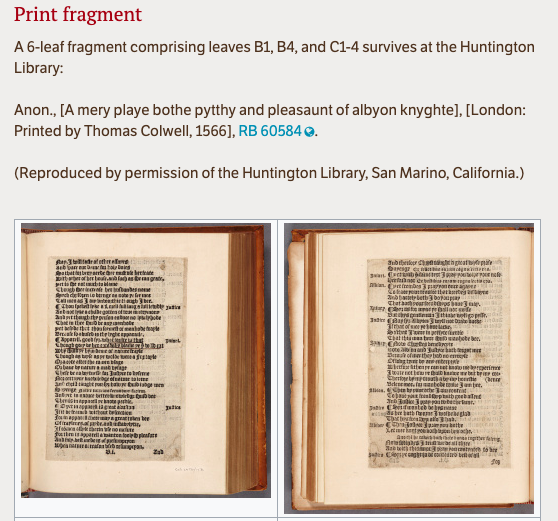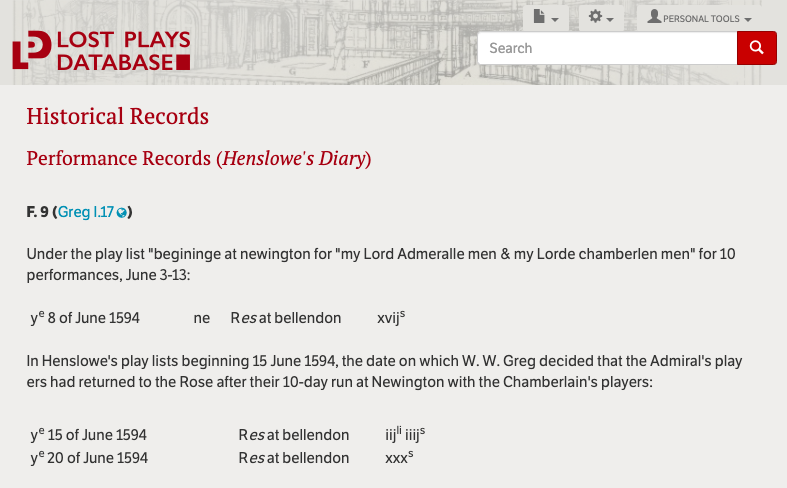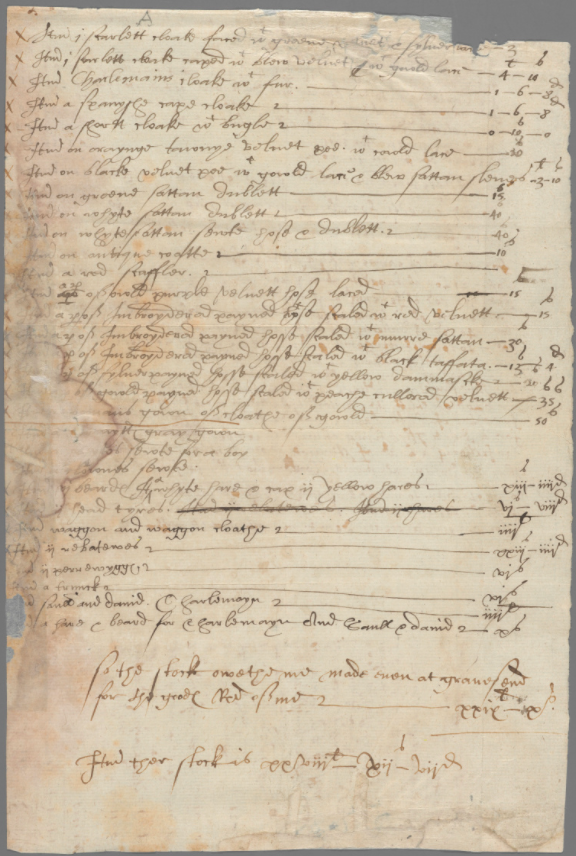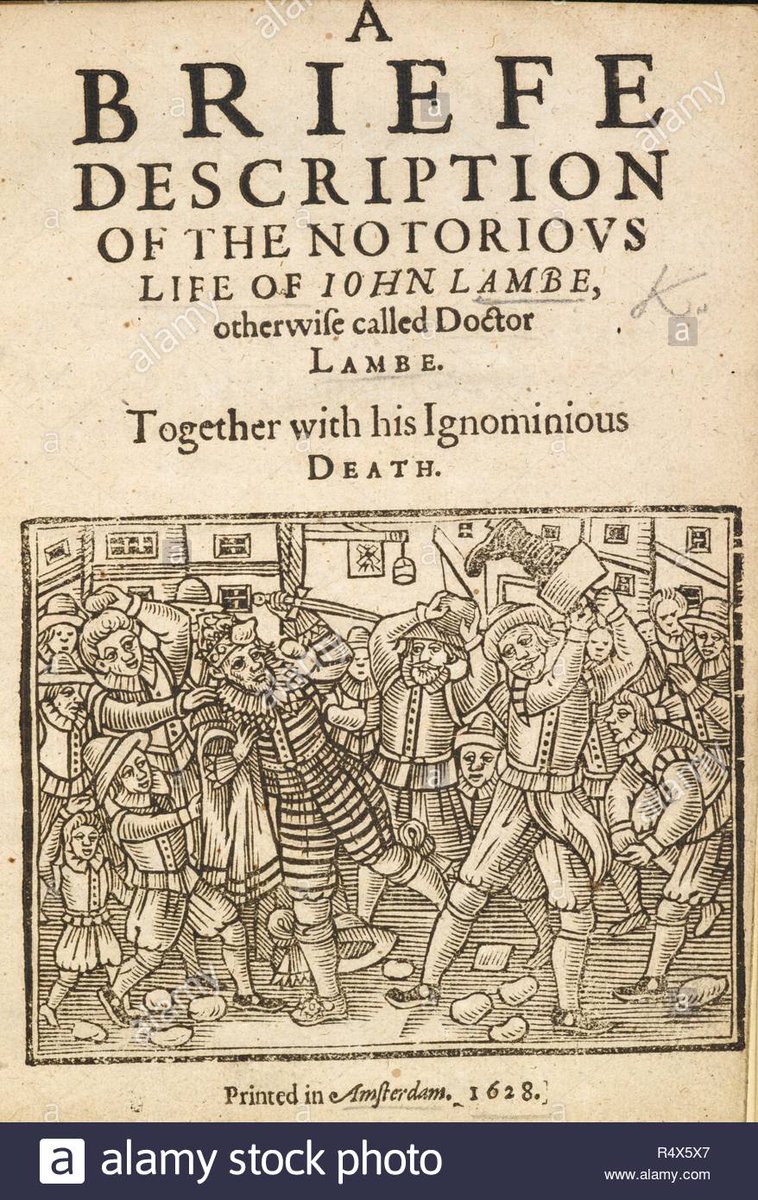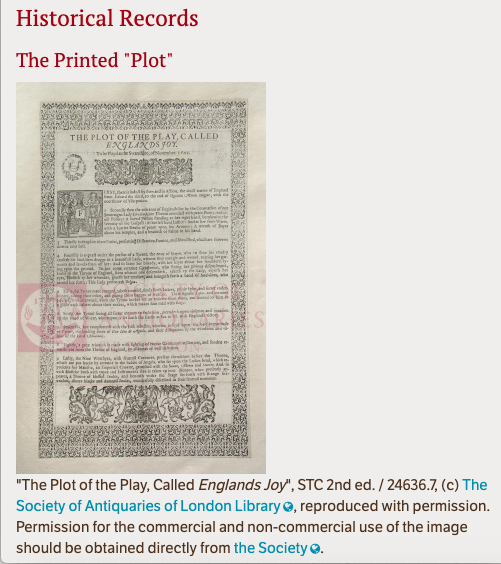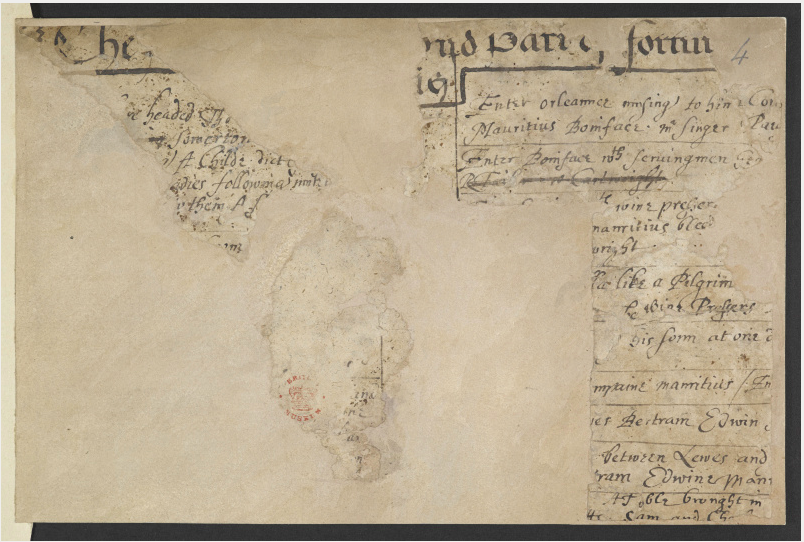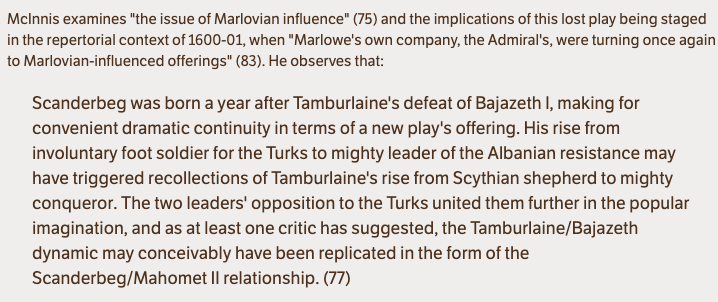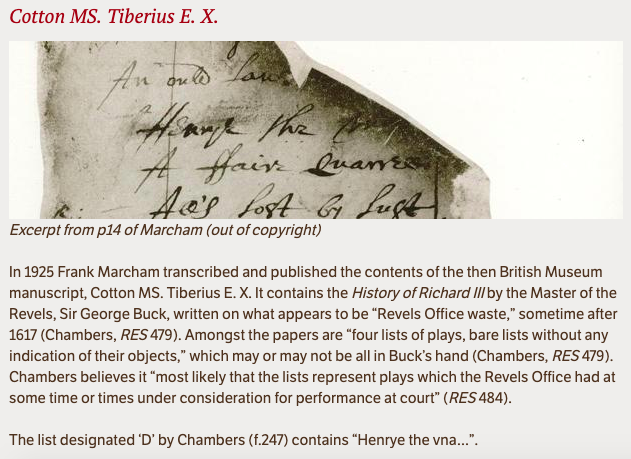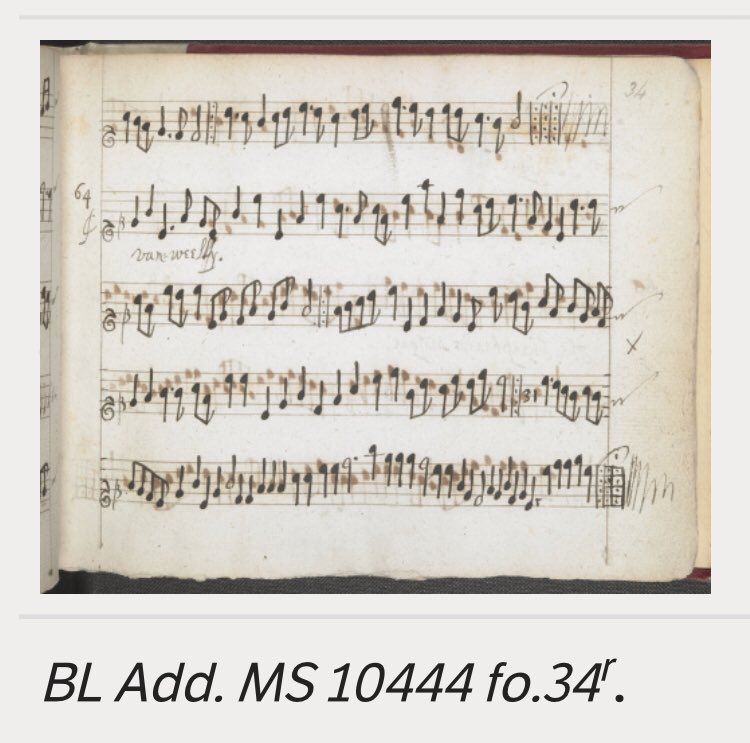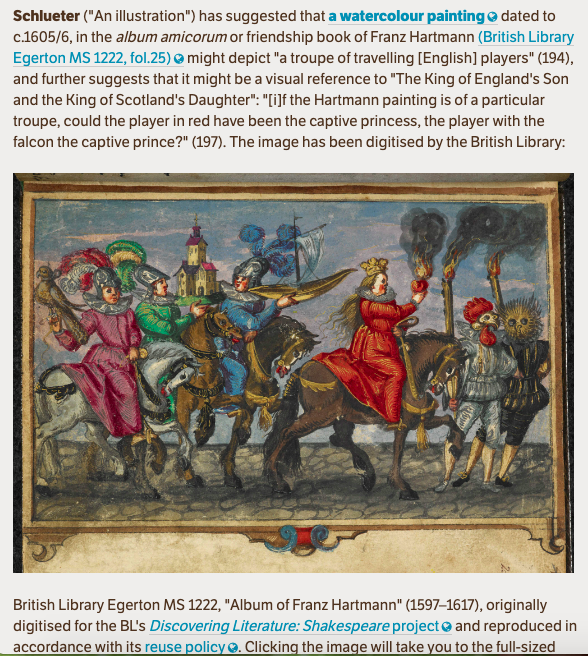If anyone needs a distraction from the bin fire that is the world just now, I thought I'd tweet an A-Z of quite interesting things about lost plays. One a day, unless I get impatient. Not meant to be exhaustive or have any real point besides idle curiosity. Here's A:
A is for 'Albion Knight' (c.1565) - interestingly, this lost play is known from a 6-leaf *print* fragment at the Huntington: https://lostplays.folger.edu/Albion_Knight
B is for 'Belin Dun' (1594), the first thief hanged in England, and Robin Hood's 'evil twin' as @MatthewSteggle calls him. Somewhat astonishingly, this play called for an actual stable on stage:
https://lostplays.folger.edu/Bellendon
https://lostplays.folger.edu/Bellendon
C is for 'Charlemagne' (c.1588), known from the Alleyns' list of theatrical costumes (now at @HoughtonLib). The list includes 'Charlemains cloake wt fur', 'a hare & beard for Charlemayn', and payment for the book of the play:
https://lostplays.folger.edu/Charlemagne
https://lostplays.folger.edu/Charlemagne
D is for 'Doctor Lambe and the Witches' (1634), an 'An ould play, with some new scenes' to capitalise on the success of Heywood &Brome's *Late Lancashire Witches*. The real Doctor Lambe was notorious; he was bludgeoned to death after a play at the Fortune:
https://lostplays.folger.edu/Doctor_Lambe_and_the_Witches
https://lostplays.folger.edu/Doctor_Lambe_and_the_Witches
E is for 'England's Joy'. In the sole surviving 'advertisement' for a play from the period, Richard Vennar promised all manner of novelties at The Swan on 6 November 1602 -- but pocketed the admission fees and fled before the play started:
https://lostplays.folger.edu/England's_Joy
https://lostplays.folger.edu/England's_Joy
F is for 'Fortune's Tennis, Part 2' -- one of just a handful of plays for which a backstage plot (mostly) survives. Yet this fragmentary plot reveals a great deal, and contra Harbage & Chambers, the play appears to have been neither comic nor occasional:
https://lostplays.folger.edu/Fortune's_Tennis,_Part_2
https://lostplays.folger.edu/Fortune's_Tennis,_Part_2
G is for 'George Scanderbeg' (c.1601) -- registered for publication soon after the short-lived Earl of Oxford's Men (as reincarnated around 1600) performed it, probably at the Boar's Head. The names Scanderbeg & Tamburlaine were often coupled:
https://lostplays.folger.edu/George_Scanderbeg
https://lostplays.folger.edu/George_Scanderbeg
H is for 'Henry the Una' (c.1619) -- still my favourite story from the lost-plays research. As @matthewsteggle brilliantly showed, no, not a 'Henry the 1st', but an impotent Castillian king, Henry the 'Unable':
https://lostplays.folger.edu/Henry_the_Una
https://lostplays.folger.edu/Henry_the_Una
I is for 'Isle of Dogs' (1597) - the most notorious of all lost plays, it almost caused the closure of all London playhouses. In 2017, Misha Teramura managed to identify the anonymous informant who brought the seditious play to the government's attention:
https://lostplays.folger.edu/Isle_of_Dogs,_The
https://lostplays.folger.edu/Isle_of_Dogs,_The
J is for ‘Jeweller of Amsterdam’ (1616), a true-crime play by the King’s Men, about the murder of John de Wely, who brought precious jewels to the court of Maurice, Prince of Orange at The Hague. Listen to a recording of a surviving musical fragment here: https://lostplays.folger.edu/Jeweller_of_Amsterdam#Music
K is for 'King of England's Son and the King of Scotland's Daughter' (c.1598?) -- a lost English play that survives in a German redaction printed in 1620. It has points in common with R&J and the Prince Hal plays, and a Faust-like magician called Barrabas:
https://lostplays.folger.edu/King_of_England's_Son_and_the_King_of_Scotland's_Daughter
https://lostplays.folger.edu/King_of_England's_Son_and_the_King_of_Scotland's_Daughter

 Read on Twitter
Read on Twitter